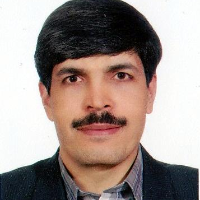Combination of Radio Occultation data in 3D and 4D functional model tomography for retrieving the wet refractivity indices
Atmospheric wet refractivity indices, which are dependent on the water vapor, are one of the most important parameters for analyzing climate change in an area. Wet refractivity indices can be estimated from Radiosonde stations measurement or calculated from numerical meteorological models. But due to low temporal and spatial resolution of radiosonde stations and severe variations of water vapor in the lower levels of Atmosphere, today’s numerical meteorological models provide low accuracy for atmospheric parameters. But nowadays, by growing number of stations that can use global positioning satellite measurements, atmospheric parameter can be estimated via remote sensing measurements in wide temporal and spatial resolutions. Wet refractivity indices cause delay in GPS measurement signals thus this delay have information about distribution of wet refractivity indices in atmosphere. By the use of global positioning satellites that can estimate atmospheric wet delay and tomography method, wet refractivity indices can be estimated. One of the growing methods for measuring the atmosphere parameters is the radio occultation technique. By increasing the number of low earth orbit satellites that carry GNSS receiver, this technique can provide observation in all of the globe, which its observations are obtained directly from the type of atmosphere parameters. The aim of this study is to use a combination of RO and GPS observation in 3D and 4D atmospheric tomography. But since tomography problem are ill-posed because of the poor distribution of GPS observations in network, a functional model has been implemented to estimate the wet refractivity indices from of the atmospheric tomography problem. By expanding tomography’s unknowns to base functions coefficients, the number of unknowns will be decreased and problem will become well-posed and unknowns can be estimated from inverse problem. In the three-dimensional functional model, combination of spherical cap harmonics and empirical orthogonal functions have been used to solve the inverse problem. Spherical cap harmonics are used to represent the wet refractivity indices in horizontal distribution and empirical orthogonal functions are used for the vertical distribution of the unknown coefficients. Eventually, the B-spline is used to represent the four-dimensional functional model and the dependence of coefficients to the time. After implementing 3D and 4D functional models, the relative weight of RO data with comparison to GPS data has been calculated using variance component method. The US region of California has been selected as the study network due to its high tectonic importance and the large number of GPS stations. The results in two considered tomography epochs have been validated with radiosonde station data in the network and also have been compared with ERA5 reanalysis data. Comparison of the profiles obtained from tomography and the ERA5 data profiles with the radiosonde wet refractivity indices shows that the results obtained from the functional model tomography are better than those of the ERA5 data. The results of the combination illustrate that using RO data in both 3D and 4D models, the RMSE has been decreased and showed improvement of about 7 to 10 percent compared to uncombined tomographic models. Also, it is seen that using RO data in the 4D model has higher accuracy compared to the 3D model due to the use of a time-dependent functional model that increases the functional model's accuracy.
- حق عضویت دریافتی صرف حمایت از نشریات عضو و نگهداری، تکمیل و توسعه مگیران میشود.
- پرداخت حق اشتراک و دانلود مقالات اجازه بازنشر آن در سایر رسانههای چاپی و دیجیتال را به کاربر نمیدهد.



